Japan September travel overview: season, food, nature, events
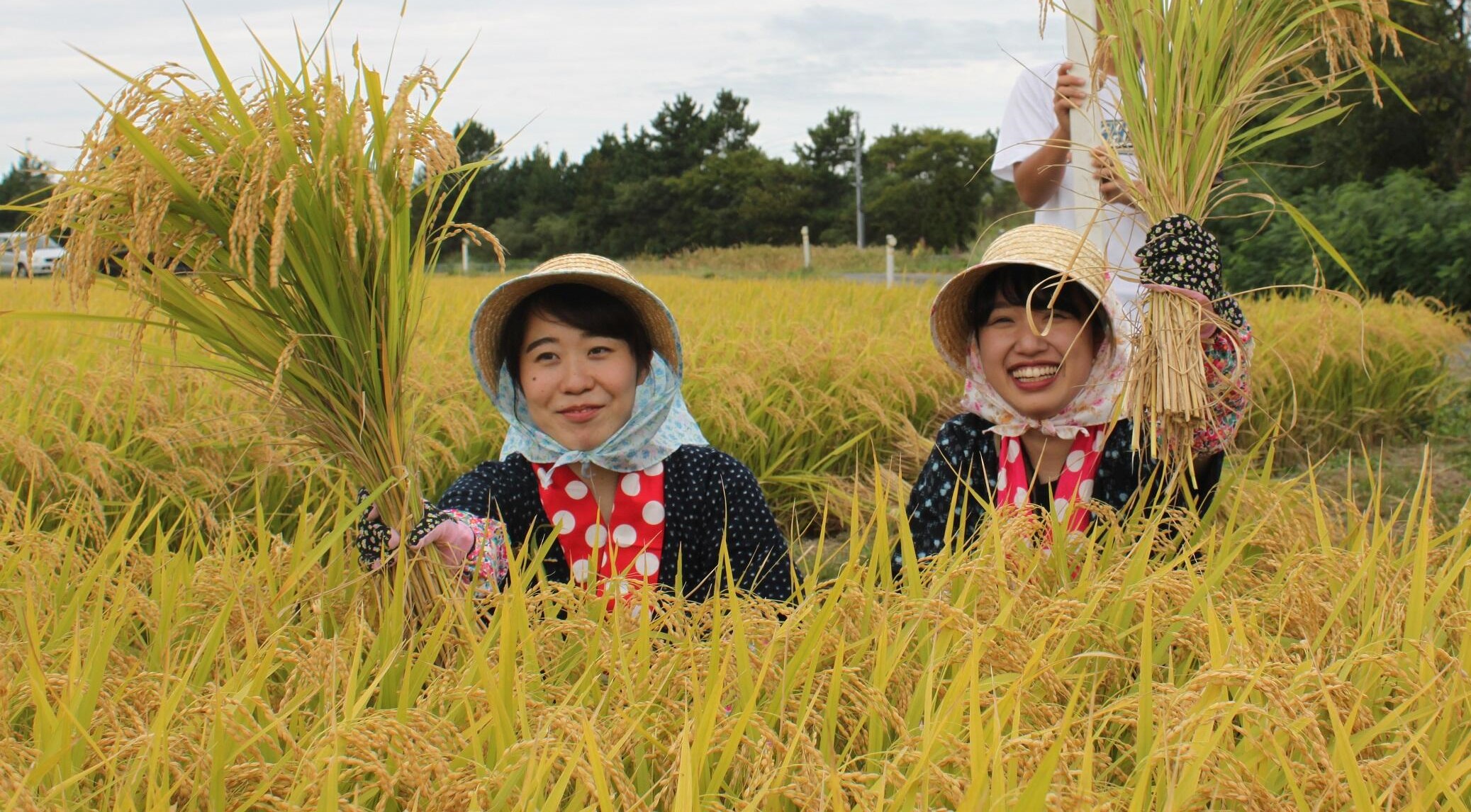
After the long and often hectic days of summer in Japan, September is a time welcomed by many, though school children will undoubtedly not be among them. September, in fact, is very much a time of transition between the final hot days of summer weather and the distinctly cooler mood of Japanese autumn. And the evening temperatures drop quickly in September and, even better, Japanese domestic tourism drops to almost zero in Kyoto and other famous destinations across the country.
September is a low season month for domestic Japanese tourists as the month is the beginning of the second semester for students, and the resumption of work (versus summer vacations and summer play moods) for all workers across the country.
For international tourists interested in Japan, September is a very good travel time that extends through to super high season beginning in mid- to late October (autumn leaves!). However, climate change has made September a big month for typhoons and the autumn coolness comes later, though the evenings are absolutely perfect!
In September, look for aki no sora, or autumn skies: wispy cirrus clouds, that seem to change by the minute. There is a saying in Japanese that the autumn skies are as fickle as a woman’s heart (onna gokoro to aki no sora). In general, September is associated with the most beautiful full moon of the year the harvest moon (and thus a huge Japanese tea ceremony moment), and the autumnal equinox, honored by an annual national holiday on the 23rd.
The equinox or higan, as it is called in Japanese, marks a time when many people pay their respects at the family’s ancestral grave. Kyoto, with its numerous major graveyards, is especially busy during the higan equinox period but so are the big temple graveyards of Tokyo and other major cities.
In terms of space or location, September is very much connected with the countryside and the all-important rice harvest. In September, Japan’s quaint villages offer international tourists a taste of Japan’s unchanging countryside splendor. And visiting the Japanese autumn countryside is really easy from all major cities, including Tokyo. In the Osaka-Kyoto region the village of Ohara is especially popular in the autumn. The same is true of the Shigaraki area of Shiga nextdoor to Kyoto and also along the west side of Japan’s biggest lake, Lake Biwa. And the Tamba region is also excellent for fall village scenes and outdoor markets. From Tokyo, it’s easy, even as a day trip, to visit the countryside wonders of the Izu Peninsula, and the early colors on the lower slopes of the Japanese Alps (from Kamikochi or in the Karuizawa area).
Mackerel or saba comes into season in September and you will notice it emphasized on the menus of many great local izakaya pubs and traditional Japanese restaurants. Starting in the Heian period (794-1185), mackerel were delivered to Kyoto from the Japan Sea on a special route known as the saba kaido—a 75-kilometer route connecting Kyoto with the port of Obama. This route was used as the main route for bringing this much prized fish to the Kyoto-Osaka region until trains revolutionized transportation at the turn of the 19th century.
Another favorite theme of early autumn is the bell cricket. As the summer's cicadas die en masse, the crickets begin their serenade: a poignant and melancholy sound much loved by the poets of old. The appreciation of insect song may be unique to the Orient. The custom of keeping chirping insects and comparing their songs is still popular in modern Japan. In Kyoto there is a temple called Kegon-ji which keeps about 4,000 bell crickets in glass tanks. The temperature is kept at a constant 25 degrees centigrade so that they sing throughout the year. This has earned it the nickname Suzumushi-dera, or Bell Cricket Temple.
In the Japanese tea ceremony, the month of September has been poetically captured with “goma” associations that capture the essence of each 10-day period: early September , mid-September , late September . These key words and themes that have been classically repeated in Japan for more than 1,200 years. The September goma key words can help you “imagine” what to expect when you travel in Japan in that month. Early September themes: Ginpu or reading poems in the autumn breeze while watching the harvest moon; Choyo chrysanthemum festivals, the flower symbolic of longevity and eternal youth. Mid-September themes: Aka tombo red dragonflies; Ko getsu moon reflections on lakes and ponds; Gyokuto rabbits, as Japanese people see a rabbit pounding mochi rice in the full moon. Late September themes: Kari naku wild geese calls, as they migrate south; Eda gaki persimmons on a branch or hung to dry beneath the eves of traditional farmhouses; celebrations of the autumn rice harvest in many forms; Aki no nana kusa or the seven grasses of autumn: hagi bush clover; susuki Japanese pampas grass, kuzu arrowroot, nadeshiko pink dianthus, ominaeshi patrina, fujibakama mistflower, asagao morning glory.
- Japan September travel food highlights
- Japan September travel tree and flower highlights
- Japan September travel festival highlights
- Kushi: Beautiful wooden combs for life!
- Higan autumn equinox and Buddhist rituals
- An Interview with Sake Maker Fukutoki Ujita
Content by Ian Martin Ropke, owner of Your Japan Private Tours (est. 1990). I have been planning, designing, and making custom Japan private tours on all five Japanese islands since the early 1990s. I work closely with Japan private tour clients and have worked for all kinds of families, companies, and individuals since 1990. Clients find me mostly via organic search, and I advertise my custom Japan private tours & travel services on www.japan-guide.com, which has the best all-Japan English content & maps in Japan! If you are going to Japan and you understand the advantages of private travel, consider my services for your next trip. And thank you for reading my content. I, Ian Martin Ropke (unique on Google Search), am also a serious nonfiction and fiction writer, a startup founder (NexussPlus.com), and a spiritual wood sculptor. Learn more!
Japan September travel food highlights
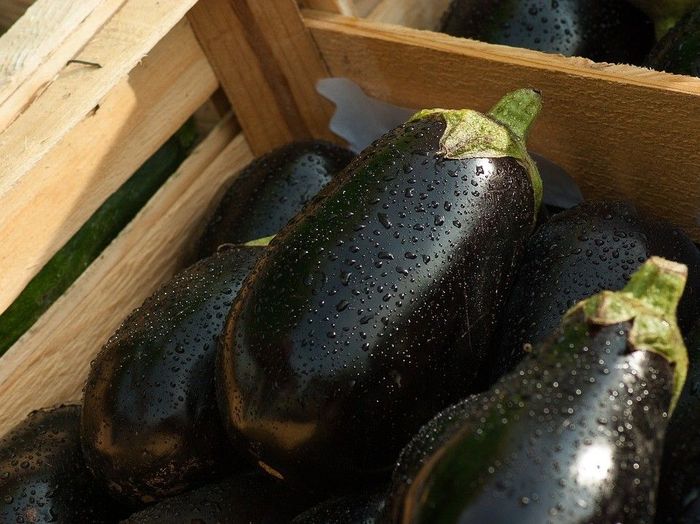
The early autumn harvest wonders of September are especially connected to vegetables (cucumbers, eggplant, kuzu arrowroot), fruits (persimmons, pears, chestnuts), connoisseur matsutake mushrooms, and gingko nuts.
A typical autumn scene is the picture-perfect sight of ripe, orange kaki (persimmons) standing out against a bright blue, crisp autumn sky. But kaki are not just something to look at; you can also eat them. Kaki that you can eat fresh right off the tree are round and are called amagaki (sweet kaki). Dried persimmons or hoshigaki, made from a variety known as shibugaki, are also a popular autumn treat. No matter which way you eat them you are sure to get lots of vitamin C. If you don’t get out into the country, look for these treats in any self-respecting fruit store or the basement gourmet food level of Japanese department stores.
Mid- to late-September (and October) is when the lucrative matsutake mushroom harvest hits the shops. As expensive as the prized French truffle, the matsutake is a rare treat: costing about US$100 for a basket of 3! Matsutake cannot be cultivated: it only grows naturally in natural pine forests (very rare nowadays). The best way to eat matsutake is to lightly grill them and then eat them immediately. If you are simply interested in seeing them, there’s an well-known shop that specializes in them in downtown Kyoto, about thirty meters north of Sanjo on Teramachi. Looking at them, by the way, is absolutely free of charge. Just don’t touch!
Japan September travel tree and flower highlights
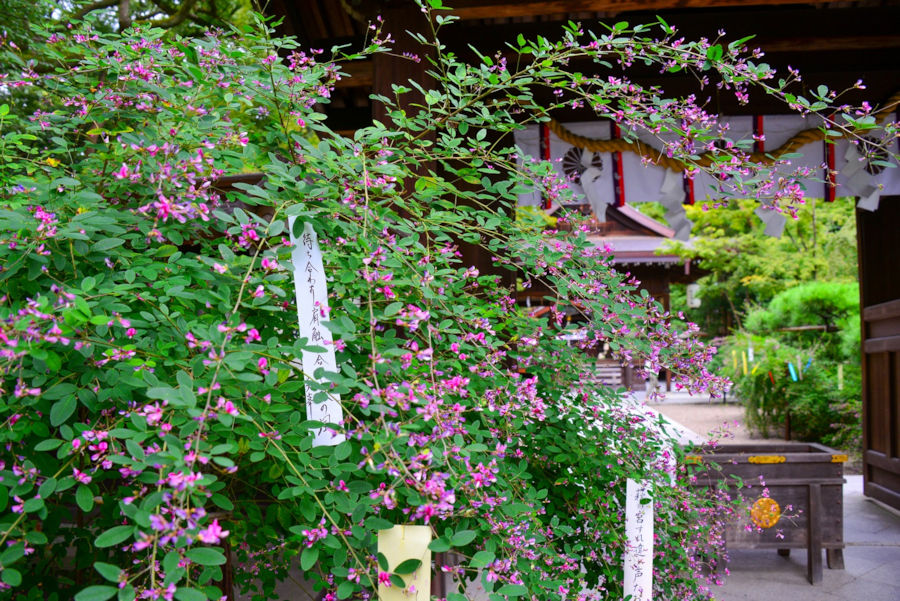
For a thousand years Japan’s autumn flowers have been admired for their subtle beauty, appearing again and again as design motifs on screens, ceramics, lacquerware, and kimono. Hagi, or bush clover, was greatly loved by the ancient poets--more so, it seems, than even cherry blossoms. Bush clover grows up to ten feet high from a single root cluster. Its reddish-purple or white blossoms can be found in many gardens in fall. There is a Hagi Festival on the 15th and 16th of this month at Nashinoki Shrine during which people compose haiku, write them on strips of paper, and then hang them on the hagi bushes. Hagi is also cultivated at Jorin-ji Temple on Kawabata, north of Imadegawa.
On my fingers do I count
the meadows flowers of the fall,
and find their number is
seven in all.
Bush clover, eulalia, arrowroot,
pinks, patrinia, agueweed,
and bellflower--these they call
the seven flowers of the fall.
[From the Manyoshu, Japan’s oldest collection of poems: compiled sometime after 759 AD during the Nara period]
Japan September travel festival highlights
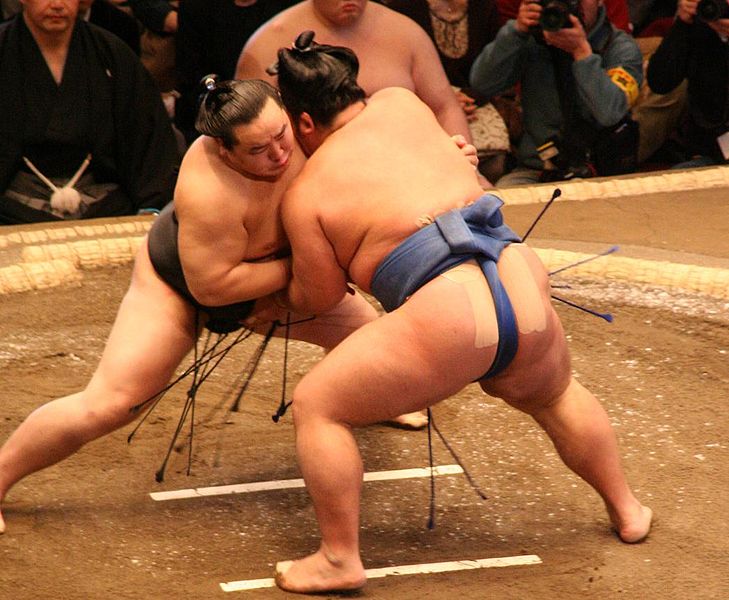
Cormorant Fishing in Arashiyama (until Sept. 15; Kyoto): This unique, old way of fishing (dating from the 8th century), using traditional, lantern-lit boats and cormorants, is known as ukai in Japanese. In Kyoto, the exotic and beautiful ukai tradition continues as a popular tourist attraction. Autumn Sumo basho tournament (Sept. but varies; Tokyo): Tokyo’s autumn (September) sumo tournament is a 15-day tournament that starts early in the morning and runs until about 18:00. The first part of the day is for lower ranked wrestlers and the late afternoon for the sumo stars. Matsuo Taisha Hassaku Festival (first Sun. in Sept.; Kyoto): On the first Sunday of September the annual Hassaku Festival is held at Matsuo Shrine (the sake shrine), to ensure sufficient rain for a good harvest. The festival includes interesting entertainment: costumed children carrying a portable shrine (mikoshi) made of sake casks (10:00); a rare form of dance (16:00) and kids sumo wrestling all day long (8:00-16:00). At night, thousands of paper lanterns are lit in the precincts and a folk dance is performed (19:00) by the people of the neighborhood. Many street stalls are set up on the festival day. Matsuo Taisha Shrine is a short walk from Matsuo Stn. on the Hankyu line. Choyo no Sechi-e Chrysanthemum Festival (Sept. 09; Kyoto): According to Chinese mythology, drinking a special wine made from chrysanthemums could make you young forever. Inspired by this ancient legend, chrysanthemum-flavored sake is served at 13:30 at Horin-ji Temple (Arashiyama). It can be sampled after saying a prayer at the altar. A free Noh theater performance will be held at 13:30.
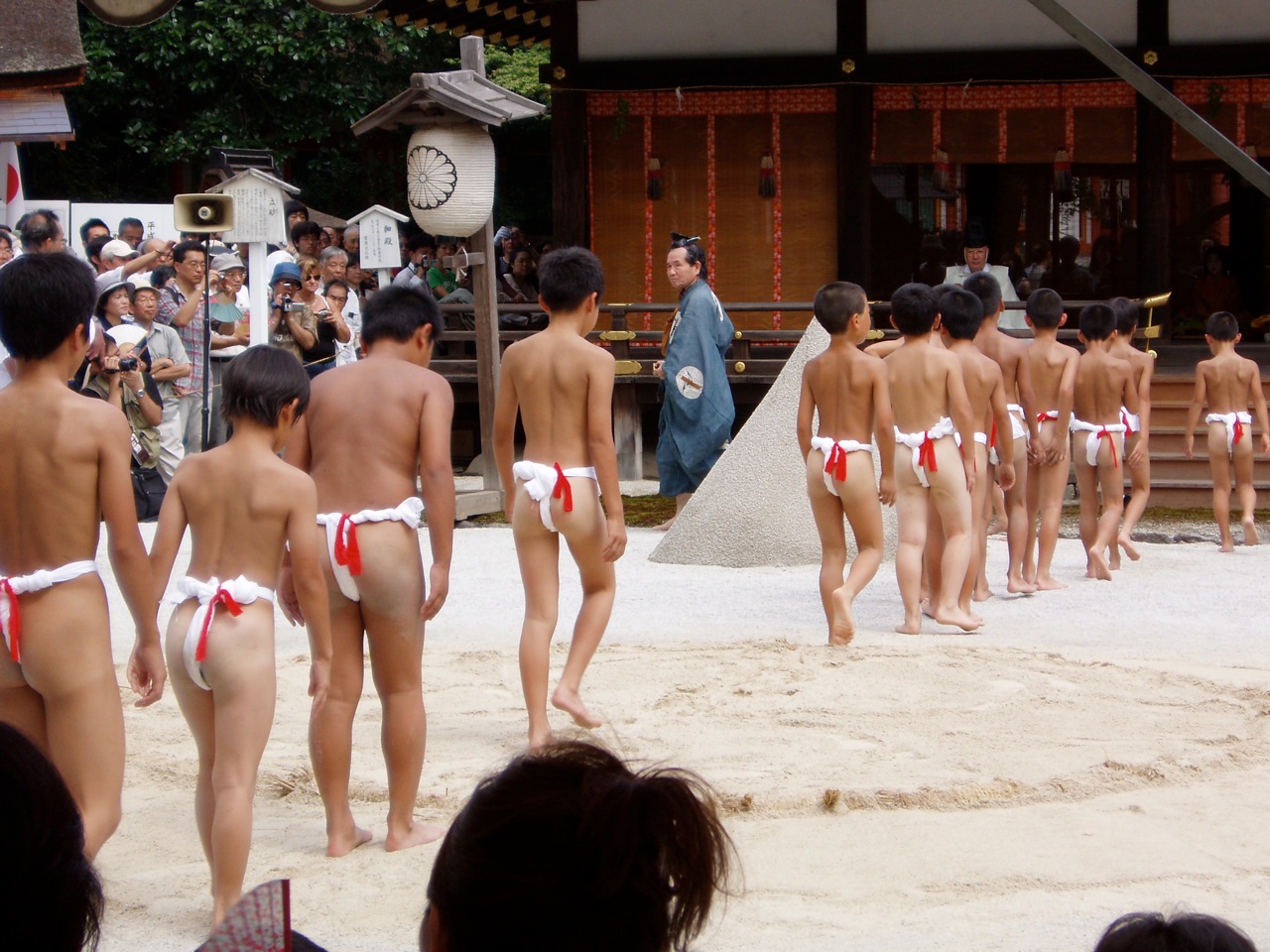
Karasu-zumo Crow Sumo Wrestling (Sept. 09; Kyoto): This unusual event begins at 10:00 with prayers, after which two Shinto priests, dressed in ceremonial robes, sit before two mounds of sand and caw like crows. The end of the ceremony features sumo wrestling bouts between boys from the area around the shrine. You will also see incredible chrysanthemum display here. At Kamigamo Shrine. Seiryu-e Festival (Sept 14-15; Kyoto): Held at Kiyomizu Temple, one of Kyoto’s most popular tourist destinations, this festival is called Seiryu-e, or the the Blue Dragon rite. According to legend, this dragon, a reincarnation of the Kannon deity (the Goddess of Mercy), comes to drink every night from the Otowa-no-taki waterfall in the temple precincts. As part of the festival, a giant dragon (made of linen and Japanese traditional washi paper by skilled Kyoto craftsmen) is raised high and paraded around the precinct, while monks blow giant seashell horns. The festival, which also features other deity constructions, will last about one hour (14:00-15:00), passing over the observation platform of the temple and ending at the main hall. Hagi Bush Clover Festival (Sept. 21-23; Kyoto): Nashinoki Shrine, on the east side of Kyoto’s Old Imperial Palace, is famous for its water and its hagi bushes. People come here to write haiku (17-syllable poems) on strips of paper and tie them to the flowering bushes. After rituals performed for the deity, a noh/koto performance is held. Comb Festival (Sept. 22; Kyoto): Hairstyles and kimono from different eras of Japanese history come to life as used combs are put to rest in what is both an unusual festival and a great opportunity to see Japanese women all dressed up in traditional costumes and with the most incredible hairdos. Cancelled in case of rain. Gokonomiya Shrine Noh Performance (Sept. 23; Kyoto): Outdoor Noh performances at this shrine on this day every year. Located near Momoyama Goryomae Stn. on the Kintetsu railway line. Tokyo Game Show (late Sept.; Chiba): This huge event is Japan's biggest video game conference. It attracts countless video game enthusiasts and industry insiders and is, thus, a favorite for photographers because of the hundreds of models promoting various games and companies.
- Japan September travel food highlights
- Japan September travel tree and flower highlights
- Japan September travel festival highlights
- Kushi: Beautiful wooden combs for life!
- Higan autumn equinox and Buddhist rituals
- An Interview with Sake Maker Fukutoki Ujita
Kushi: Beautiful wooden combs for life!
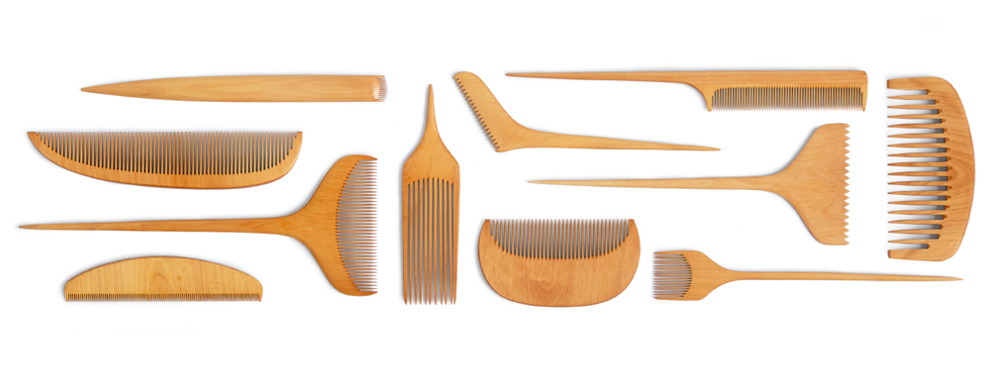
First time visitors to Kyoto cannot help but be impressed by how everyday objects often reveal complex worlds beneath a simple surface. So it is with as humble an object as a wooden comb which has its own festival in Kyoto on the 22nd of this month (see above).
The Kojiki, the Records of Ancient Matters completed in 712, relates Japan's mythology, customs, and ancient history in great detail. One episode tells how the deity Izanagi travels to the underworld to implore his cohort Izanami to return with him. She asks him to wait while she consults with the gods in a cave. Growing impatient, Izanagi breaks off one of the end teeth of his left comb, lights it, and goes in, only to find her 'a hideous mass of corruption', with eight Thunder-Gods dwelling in various parts of her decomposing form. Shocked, he starts to flee while Izanami, equally upset to be seen in such a state, sends a devil after him. Relentlessly pursued, Izanagi breaks off the teeth of the comb in the right bunch of his hair and casts them down. They instantly turn into tasty bamboo shoots, the devil stops to eat them, and Izanagi escapes.
Any object capable of repelling devils cannot, of course, simply be thrown away, but needs to be put to rest with an appropriate ceremony. Such a ceremony takes place annually at the Yasui Kompira Shrine (see Comb Festival, Sept. 22, above ) where prayers are said for used combs and combs with broken teeth. After their honorable spirits have been taken care of, they are then burned in a purifying ritual fire.
Because the Japanese word for comb ('kushi') contains the sounds 'ku' and 'shi', which can mean 'suffering' and 'death', there are several Japanese superstitions concerning these words. Accidentally breaking a comb or a tooth is considered bad luck. They should not be given as gifts, for then hardship might afflict the recipient, nor should you pick up someone else's comb, lest you be visited by their suffering.
Each traditional Japanese wooden comb is handmade according to a process little changed in 1200 years. To make a comb, each tooth is first sawn by hand, and then filed smooth. Finally, the comb is laboriously polished in several stages, using sharkskin, scouring rushes, hemp, and, last of all, deerskin. This painstaking process is what gives them their deep luster. Considering the amount of handwork which goes into the making of each comb, it is amazing that a small one can cost as little as ¥1,200. The finest combs are made of sandalwood. While, the least expensive ones are made from boxwood imported from Thailand. Once you use a handmade boxwood comb, gentle to the scalp and non-static, you'll never again be satisfied with plastic!
Kyoto comb shopping: Kyoto’s Jusan Ya, a small shop on the north side of Shijo Street a little west of Teramachi, has been making and selling fine boxwood combs since 1875. Jusan Ya also makes a variety of exquisite kanzashi, the ornamental hairpins many older women put in their long hair. In Japan, where a woman's beautiful, long black hair is considered as important as her life, is it any wonder that tools for hair care have a beauty and tradition all their own? Tokyo comb shopping: Yonoya (yonoya.com) in Taito City is considered to be the best shop in Tokyo for traditional wooden combs. Second would be Jusanya (Taito City, Tokyo) and the third would be the Oriental Bazaar in Shibuya.
- Japan September travel food highlights
- Japan September travel tree and flower highlights
- Japan September travel festival highlights
- Kushi: Beautiful wooden combs for life!
- Higan autumn equinox and Buddhist rituals
- An Interview with Sake Maker Fukutoki Ujita
Higan autumn equinox and Buddhist rituals
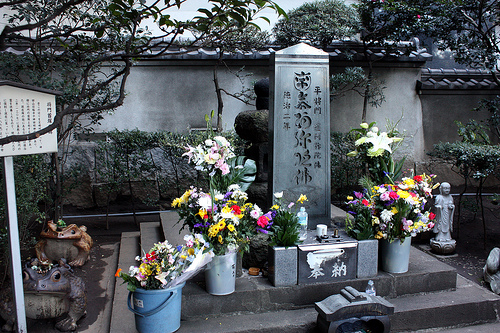
There is a saying in Japanese that goes, "atsusa samusa mo higan made" (Neither heat in summer, nor cold in winter last beyond higan.). There are two higan or equinoxes in the year: one in spring and one in autumn. The middle day of each higan week is a National Holiday (shunbun no hi, Spring Equinox; shuubun no hi, Autumnal Equinox).
The equinox is the time of the year when the length of the day and the length of the night are the same. After the spring equinox, the days get longer (until the longest day, so-called mid-summer around June 21). The days get shorter after the autumn equinox (the shortest day is around December 21st). Metaphysically, one could equate daylight with life and darkness with the other world, the world of our ancestors and all past life. Therefore, higan is that time of year when this world and the other world are equal for a brief moment. One could also see this a time when both worlds meet or cross over one another.
Though the Japanese traditionally pay their respects to their ancestors on a daily basis at the home altar or butsudan, the annual Buddhist cycle (in China and Korea) also has a number of periods that since ancient times have been a time to pay one’s respects at their ancestral graves. However, the Buddhist custom of higan is particular to Japan.
The Japanese are probably the most season sensitive people in the world. Japanese Buddhists have always viewed the time of the equinox as a special opportunity to reflect on the great changes on the horizon of the natural world (the start of spring and the end of summer) as well as the peculiarities of human life in general.
Literally translated, the two Chinese ideograms used in higan, mean the 'the far shore.' This refers to the shore on the far side of the Sea of Nothingness in original philosophy of Indian Buddhism. The Pali word for this void or emptiness (no unlike the goal of Zen Buddhism) was paramita: a virtue that, if practiced with dedication and purity, can lead to enlightenment. There are six paramitas in Mahayana Buddhism: selfless giving, perseverance, energy, meditation, wisdom, and the precepts of Buddhism itself.
In the ancient Nihon Koki (Later Chronicle of Japan) it is written that already by the early Heian period (794-1185) Japanese monks were spending a week in spring and in autumn reciting the Diamond Sutra, a practice unknown on the mainland. Today, during the seven days of higan—three prior to and after the day of the equinox—Buddhists continue to congregate at major temples to participate in rituals and listen to readings and teachings of the Dharma (Buddhist Law).
Another way of looking at higan is from the perspective of the farmer. In spring, he hopes for good growing weather for his crops. Long before Buddhism came to these shores, the farmer must have prayed a lot in the month of March before planting his crop. In autumn, the farmer’s hopes are directed towards obtaining a rich harvest. The wild dances pleading for a good harvest that are particular to September and which became part of the nembutsu tradition of Amida Buddhism (a form of Japanese Buddhism) are also part of the higan season.
- Japan September travel food highlights
- Japan September travel tree and flower highlights
- Japan September travel festival highlights
- Kushi: Beautiful wooden combs for life!
- Higan autumn equinox and Buddhist rituals
- An Interview with Sake Maker Fukutoki Ujita
An Interview with Sake Maker Fukutoki Ujita
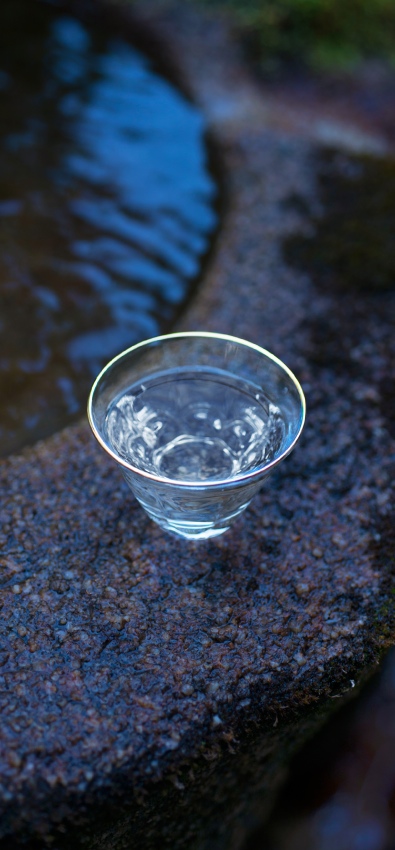
Sake is a year-round attraction in Japan for international foodies but since September is the month of the rice harvest, sake is especially relevant this month. This interview with the president of a major sake producer in Kyoto took place in 1998.
Fukutoki Ujita was born in 1920, and graduated from the Tokyo University of Commerce in 1933. After spending his early working years at a shipping firm, he took over the family firm of Tamanohikari in 1949, becoming its 11th president. In the wake of the devastation after World War II, Mr. Ujita rebuilt the company, moving it from its traditional home in Wakayama to Fushimi, the center of Kyoto’s sake industry. Established in 1673, Tamanohikari is one of Japan’s oldest sake makers, and is today Japan’s leading producer of junmai ginjo pure rice sake.
YJPT: What is junmai, or “pure rice sake”?
Mr. Ujita: Many Japanese consider sake to be one of the most outstanding aspects of our culture, but in fact, few people really know what “real sake” is. When you talk about sake, you are really talking about rice.
There are many famous high quality strains of rice for eating, such as Koshihikari, Sasanishiki and so on, but they are no use at all for making sake. Many people think that because Koshihikari comes from Niigata, good sake must come from there too. But sake making requires totally different strains of rice which come from other parts of the country—such as Omachi from Okayama, Yamada-Nishiki from Hyogo, and Okuhomare from Fukui.
If you look carefully at a sake rice grain, you will see a white core of starch through the transparent outer grain. The most important process in making junmai sake after choosing the rice is polishing it to remove everything except this very inner core of starch, which is maybe only 45% of the entire grain. To be properly polished, the grains have to be rather hard. Regular rice for eating is too fragile for this process. So this is the difference.
We have a saying in Japanese: martial arts like Judo or Sumo are 80% force and only 20% technique. In the same way, I think wine making depends 99% on the quality of the grapes and 1% on technique. And for, sake, it is maybe 80% rice and 20% technique.
YJPT: So finding the right rice must be a top priority for you.
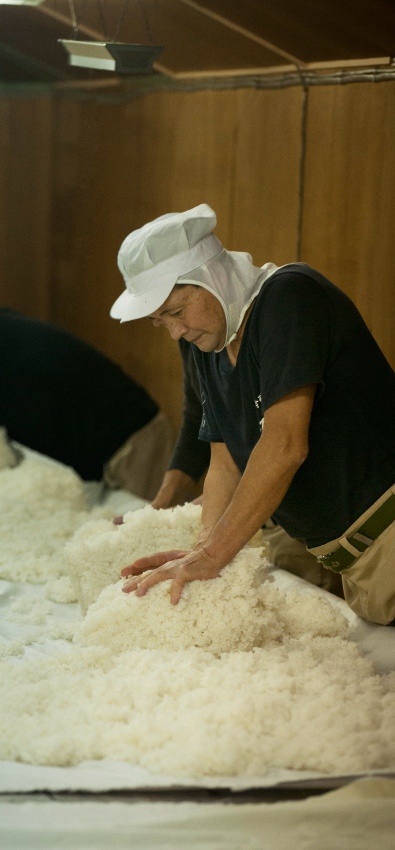
Mr. Ujita: Yes. And we start from finding the best soil for growing rice; this is a very fundamental point in sake making. I would go even further than that and say not only do you have to start with the quality of soil, but with the mindset and awareness of the farmer. This is true of the consumer and industry expert as well.
Since World War II, I think many farmers have lost the traditional understanding of how to grow good rice, because governmental policy has encouraged quantity over quality. People have forgotten how to grow high-quality natural rice, and this has had a big impact on the sake industry.
Tamanohikari is making every effort to find farmers who share our understanding of quality, and who are willing to work with us. And we hope, gradually, more and more consumers will start to share this feeling as well, and begin to appreciate “real sake.” By the way, we are planning to produce a sake made from organically grown rice beginning next year.
YJPT: Why did the Japanese lose this traditional understanding of rice and sake, do you think?
Mr. Ujita: One factor is that we suffered so much from material shortages during and just after the war. In terms of food, we were particularly short of sugar. This trauma is reflected in the wide-spread feeling that sweetness is the taste of quality, not only in sake but in wine, too. Many Japanese prefer blinding sweetness in a sake or wine, without thinking of balancing it with acidity.
To put it generally, too many people in Japan have lost a sense of proportion. I think to bring back deep appreciation and taste we have to restructure our culture. In western countries, religion is a strong factor in people's identity and their personal sense of ethics. But in Japan there are many gods, and there isn’t this factor. On top of that, the militarism of the period before and during the war severely distorted one of the most fundamental aspects of the Japanese mentality: Bushido, or the way of the Samurai.
The Japanese military forced people to believe that it is honorable to die without question, but the real Bushido teaches how to die without fear when you are faced with death. That is a great difference. The distortion of Bushido led to the distortion of other parts of Japanese culture as well. We have to once again find a way to express our intangible culture—like Bushido—through our tangible culture, such as traditional sake making, and balance the two.
YJPT: What about overseas markets? Do non-Japanese have a taste for sake?
Mr. Ujita: This might seem strange to you, but I feel that westerners often understand about “real sake” better than Japanese do. I think that wine is far more important in people's lives in the West than sake is in the life of the average Japanese. When you appreciate the complexity of wine, it is not so difficult to learn to taste the difference between two sakes. This is why “real sake” is quickly accepted in countries with a rich wine culture.
Once I was in a sushi restaurant in Sydney, Australia, where they served incredible Tasmanian salmon sushi. While I was talking to the owner, I offered him and an Australian customer in the bar a taste of Tamanohikari. The Australian man tasted the sake and complimented it by saying, “It’s very silky.” In the same situation in Japan, I would never have heard such an artistic, poetic response.
Tamanohikari is also sold in one liquor store in New York. Compared to a cheap sake made from California rice, which costs about $9 or $10 for a 1.8 liter bottle, Tamanohikari is very expensive: $30 to $40 for a 720 milliliter bottle. But even so, Tamanohikari is quite popular there.
YJPT: Where does Tamanohikari stand in the sake industry?
Mr. Ujita: Compared to the major sake breweries, it is a very small company, but if you look at only junmai ginjo sake, we are the top producer. Still, Tamanohikari has only about 100 employees—50 in the office, and 50 actual sake brewers—and the sake is made in a labor-intensive hand-made way. Most of the sake brewers are seasonal workers, called toji, who farm in the summer months, and work here in winter. It’s hard work that sometimes requires staying up all night, and as the number of farming families in Japan declines, it’s getting harder and harder to find young workers. Agriculture is no longer an independent job; it just barely supports a small family, with government handouts.
YJPT: What future do you see for the sake industry?
Mr. Ujita: The junmai ginjo sake business is a tough one, and for the sake industry as a whole, sales are falling by about 5% every year. What’s more, 95% of sake sold in Japan is made with molasses alcohol. But I don’t think things are completely hopeless. The younger generation, particularly women, are coming to appreciate dry junmai ginjo sake. And I think that there will eventually be a “big bang” in the sake industry, just like the financial big bang, freeing agriculture and sake-making from government regulation. Once that happens, I think that market forces will naturally favor companies like ours, with our kind of production. I hope that in the near future more and more people will come to prefer dry sake made of 100% premium rice.
Japan month by month private travel & culture summary index
Japan spring travel: Mar, April, May. Learn more!
Japan summer travel: June, July, August. Learn more!
Japan autumn travel: Sept, Oct, Nov. Learn more!
Japan winter travel: Dec, Jan, Feb. Learn more!
Content by Ian Martin Ropke, owner of Your Japan Private Tours (est. 1990). I have been planning, designing, and making custom Japan private tours on all five Japanese islands since the early 1990s. I work closely with Japan private tour clients and have worked for all kinds of families, companies, and individuals since 1990. Clients find me mostly via organic search, and I advertise my custom Japan private tours & travel services on www.japan-guide.com, which has the best all-Japan English content & maps in Japan! If you are going to Japan and you understand the advantages of private travel, consider my services for your next trip. And thank you for reading my content. I, Ian Martin Ropke (unique on Google Search), am also a serious nonfiction and fiction writer, a startup founder (NexussPlus.com), and a spiritual wood sculptor. Learn more!